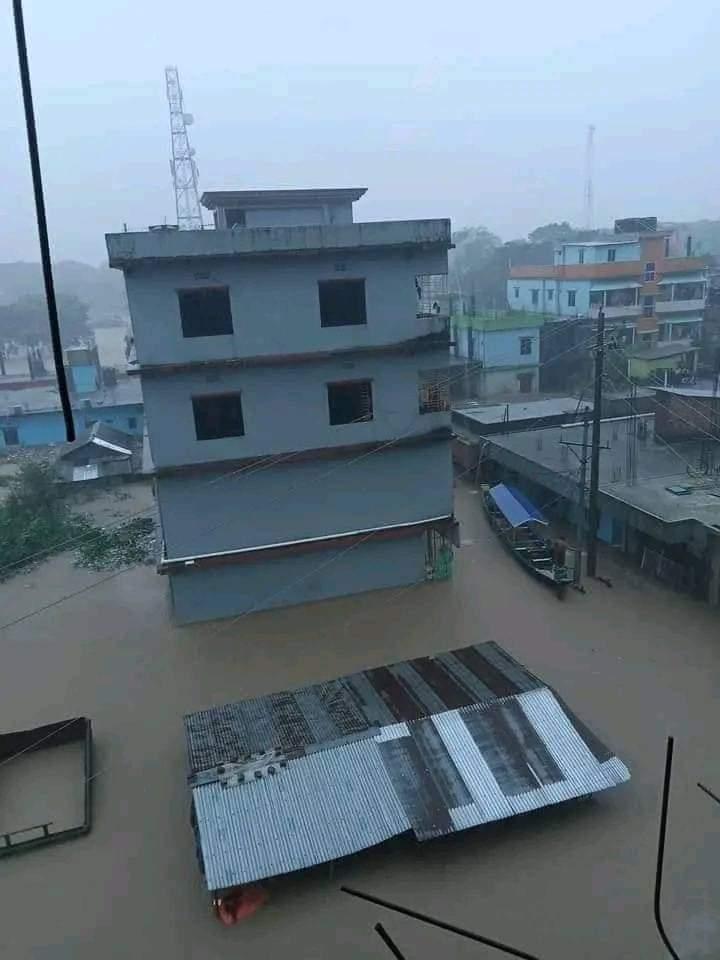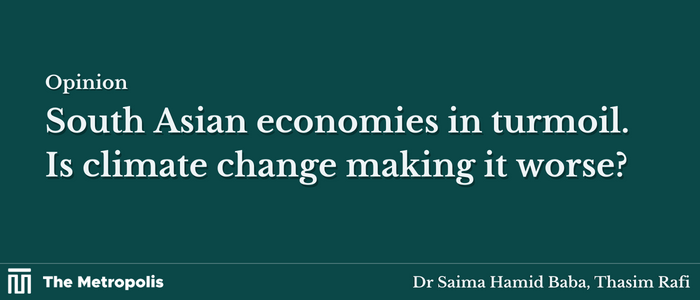South Asia is going through a difficult phase and the economy of most of the countries are in dire straits. It is further fueled by rising global inflation and energy prices. South Asia is home to roughly 25% of the world’s population and can arguably be the most vulnerable region to be affected by climate change where the sheer size of the population living in affected areas can cause a large human catastrophe.

The Indian economy which has been growing at a rapid pace over the last decade will grow well below its potential over the next two years with inflation staying above the midpoint of the Reserve Bank of India’s tolerance band and although India’s economy is growing faster than economies in Europe the job creation is still low for a country which has a large population living below the poverty line.
Pakistan is a country that has been facing a severe economic crisis and recently got IMF funding in August but is still facing a severe economic crisis. Foreign reserves are running low and the local currency is weakening at 20% since the start of the year and inflation stood at 27.3% which is exceptionally high.
Sri Lanka is going through the worst economic crisis in recent times and is seeking an IMF bailout. Inflation is rampant and stood at 70% in August, personal income taxes were hiked to a peak of 30% and total foreign debt stood at $35 billion in total which includes bilateral, multilateral, and commercial loans as of June 30 and of that $7 Billion is owed to China which is 20% of the total debt.
Bangladesh’s economic miracle is under pressure as its economy begins to get heated. Inflation is rising with high global energy prices and according to the central bank, the foreign reserves have fallen from $45.5 Billion a year earlier to $36.9 Billion this year. Bangladesh also sought a $4.5 Billion loan from the IMF to avoid any discrepancies in the balance of payments.
Climate change is hitting South Asia hard. Hundreds of millions of people are in imminent danger. The large population in the vulnerable areas will only make it worse to reduce the impact of climate change hazards. According to experts on climate change, the burning of fossil fuels is primarily to blame for climate change, which has increased the frequency and severity of heat waves around the globe, especially in South Asia
Extreme heat has been connected to an increase in heat-related mortality, wheat crop failures, power outages, and fires throughout South Asia, with poor and marginalized people being the most affected. According to a recent World Meteorological Organization assessment, floods, and landslides alone cost the country $35.6 billion in damages in 2021 and had an impact on close to 50 million individuals (WMO) in Asia.
Pakistan in August experienced one of the worst floodings in history and at its peak submerged one-third of the country with close to 2,000 deaths and 33 million people affected by the flooding and close to 2 million houses, hundreds of bridges and hundreds of thousands of acres of agricultural land were destroyed.
All this happened when Pakistan’s economy was going through a severe economic crisis. The world bank has estimated the total damages at $40 Billion. This could hamper Pakistan’s economic growth for decades. Pakistan’s poverty could increase by 2.5 to 4 points according to the World Bank as a result of the floods.
In May 2022, The Sylhet region in Bangladesh experienced one of the worst floodings in the history of Bangladesh. A quarter of the country was flooded which left almost 9 million people homeless and electricity was almost totally disrupted. Tens of thousands of hectares of agricultural land were also destroyed. Bangladesh is a country that is prone to regular floods and climate change only going to make it worse.
India has been battling climate change as well and the northern part of India especially Jammu and Kashmir and Himachal Pradesh are most prone to climate change. Millions of people living in these areas are vulnerable to melting glaciers in the Himalayas. In Punjab which is the largest wheat producer in India this year has been very difficult with low yields and the drop was almost 15% and some worst-hit districts saw 30% drops. This prompted the Indian government to limit wheat exports and this led to rising international prices and this was made worse by the war in Ukraine.
The economies of South Asia are going through challenging times fueled by rising oil prices and the Russia-Ukraine war but climate change is a threat that must be taken seriously before it’s too late. The COP27 summit in Egypt may have some ambitious targets but it is time that SAARC gets more aggressive in tackling climate change in the region to avoid severe economic repercussions.
Dr. Saima Hamid Baba is a Co-Founder of the CERD Foundation (India) and an International Climate Change Activist.
Thasim Rafi is a Specialist Advisory at PwC Sri Lanka and Visiting Lecturer at the University of Sri Jayewardenepura, Sri Lanka



